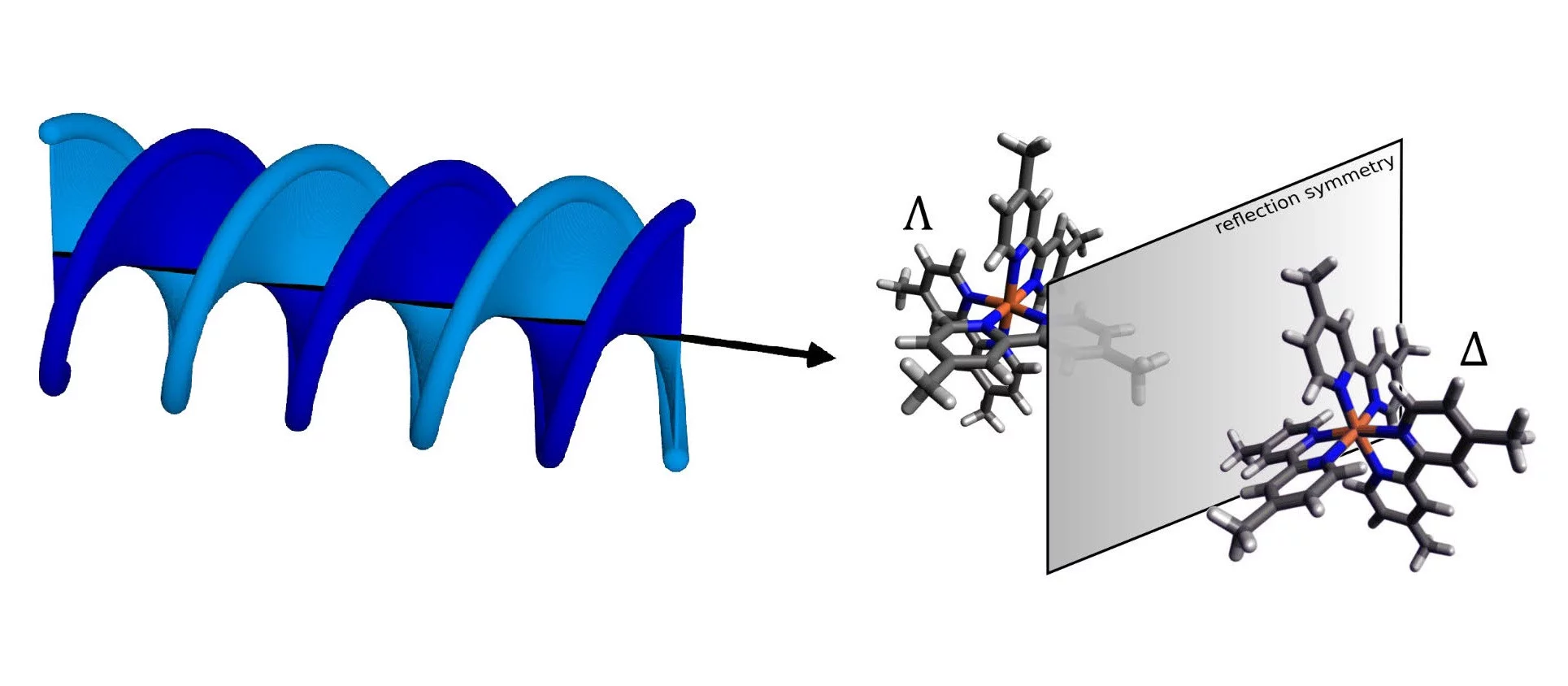Using a new method, scientists are better able to distinguish between mirror-image substances. This is important amongst others in drug development, because the two variants can cause completely different effects in the human body. Researchers from Paul Scherrer Institute PSI, EPF Lausanne (EPFL), and the University of Geneva describe the new method in the scientific journal Nature Photonics.
Some molecules exist in two forms that are structurally identical but are mirror images of each other – like our right and left hands. These are referred to as chiral molecules. Their two mirror-image forms are called enantiomers. Chirality is especially relevant in biological molecules, since it can cause different effects in the body. Thus it is essential in biochemistry and toxicology, as well as in drug development, to separate enantiomers from each other so that, for example, only the desired variant gets into a drug. Now researchers from PSI, EPFL, and the University of Geneva have jointly developed a new method that enables enantiomers to be better distinguished, and thus better separated, from each other: helical dichroism in the X-ray domain.
The currently established method for distinguishing between enantiomers is called circular dichroism (CD). In this approach, light with a particular property – what is known as circular polarisation – is sent through the sample. This light is absorbed to a different extent by the enantiomers. CD is widely used in analytical chemistry, in biochemical research, and in the pharmaceutical and food industries. In CD, however, the signals are very weak: The light absorption of two enantiomers differs by just under 0.1 percent. There are various strategies for amplifying the signals, yet these are only suitable if the sample is available in the gas phase. Most studies in chemistry and biochemistry, however, are carried out in liquid solutions, mainly in water.
In contrast, the new method exploits so-called helical dichroism, or HD for short. The effect underlying this phenomenon is found in the shape of the light rather than its polarisation: The wavefront is curved into a helical shape.
At the Swiss Light Source SLS at PSI, the researchers were able for the first time to show successfully that enantiomers could also be distinguished from each other using helical X-ray light. At the cSAXS beamline of SLS, they demonstrated this on a sample of the chiral metal complex iron-tris-bipyridine in powdered form, which the University of Geneva researchers had made available. The signal they obtained was several orders of magnitude stronger than what can be achieved with CD. HD can also be used in liquid solutions and thus fulfils an ideal prerequisite for applications in chemical analysis.
It was crucial for this experiment to create X-ray light with precisely the right properties. The researchers were able to accomplish this with so-called spiral zone plates, a special kind of diffractive X-ray lenses through which they sent the light before it hit the sample.
“With the spiral zone plates we were able, in a very elegant way, to give our X-ray light the desired shape and thus an orbital angular momentum. The beams we create in this way are also referred to as optical vortices,” says PSI researcher Benedikt Rösner, who designed and fabricated the spiral zone plates for this experiment.
Jérémy Rouxel, an EPFL researcher and the first author of the new study, explains further: “Helical dichroism provides a completely new kind of light-matter interaction. We can exploit it perfectly to distinguish between enantiomers.”
The study was made possible thanks to funding awarded through the European Research Council with the ERC Advanced Grant DYNAMOX, by the Swiss National Science Foundation with the National Centre of Competence in Research Molecular Ultrafast Science and Technology (NCCR MUST), and by the German Academic Exchange Service (DAAD).
Contact
Dr. Benedikt Rösner
Laboratory for Nonlinear Optics
Paul Scherrer Institute PSI
+41 56 310 24 54
benedikt.roesner@psi.ch
[German, English]
Original publication
-
Rouxel JR, Rösner B, Karpov D, Bacellar C, Mancini GF, Zinna F, et al.
Hard X-ray helical dichroism of disordered molecular media
Nature Photonics. 2022; 16(8): 570-574. https://doi.org/10.1038/s41566-022-01022-x
DORA PSI
About PSI
The Paul Scherrer Institute PSI develops, builds and operates large, complex research facilities and makes them available to the national and international research community. The institute's own key research priorities are in the fields of future technologies, energy and climate, health innovation and fundamentals of nature. PSI is committed to the training of future generations. Therefore about one quarter of our staff are post-docs, post-graduates or apprentices. Altogether PSI employs 2300 people, thus being the largest research institute in Switzerland. The annual budget amounts to approximately CHF 460 million. PSI is part of the ETH Domain, with the other members being the two Swiss Federal Institutes of Technology, ETH Zurich and EPFL Lausanne, as well as Eawag (Swiss Federal Institute of Aquatic Science and Technology), Empa (Swiss Federal Laboratories for Materials Science and Technology) and WSL (Swiss Federal Institute for Forest, Snow and Landscape Research). (Last updated in June 2024)

